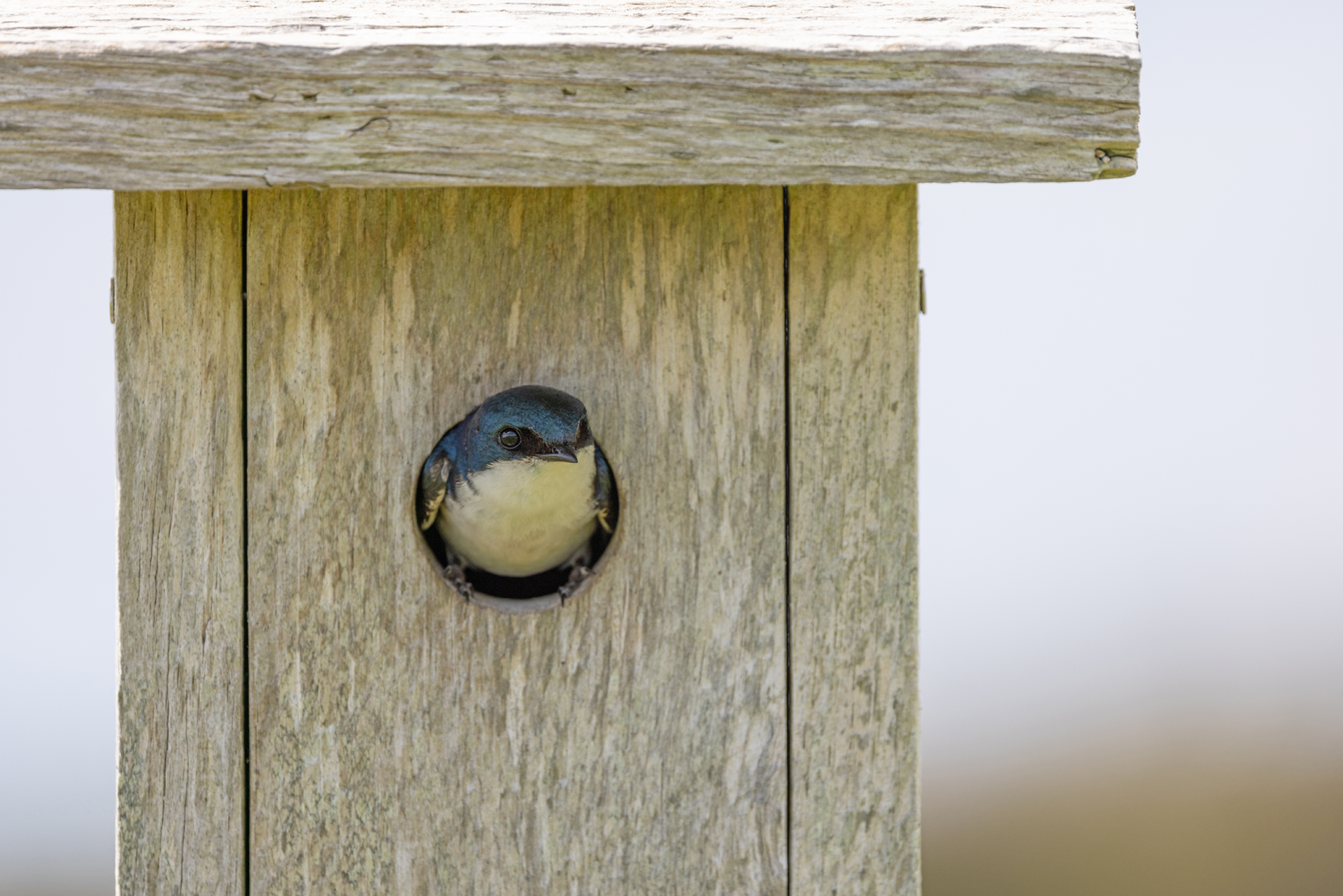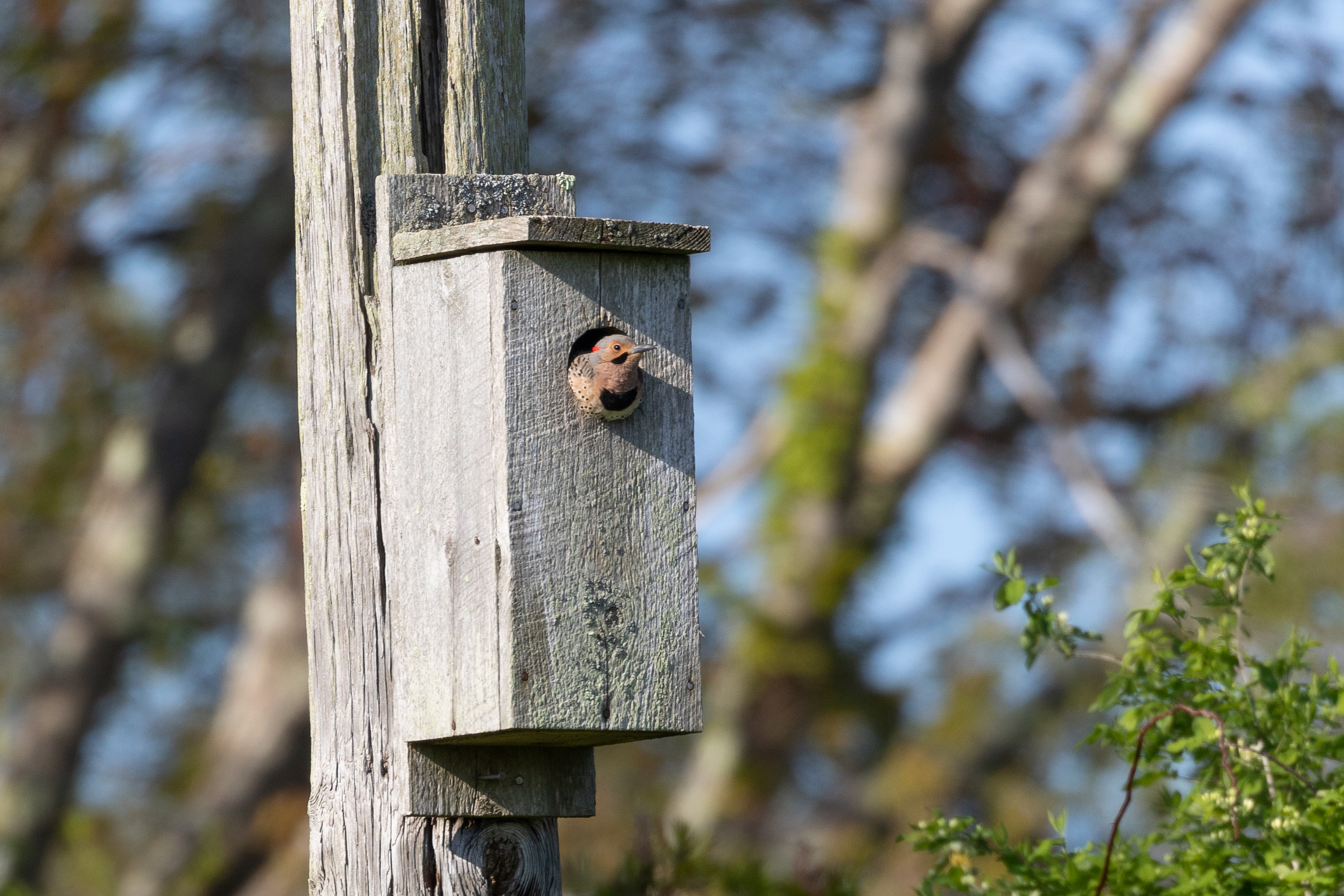Bird Box 101
April 01, 2023
The icy remnants of a freezing winter are melting, animals are becoming more active, trees are budding, and birds are nesting. While some birds build nests on tree branches, shrubs, porches, and gutters, others seek or make an enclosure.
These cavity nesters look for—or, in the case of woodpeckers, create—holes in wood to build nests and lay eggs. Unfortunately, there aren't enough natural cavities to go around. That’s where bird boxes, also called nest boxes or birdhouses, come in. They offer an alternative shelter or nesting space for birds. Here is a breakdown of bird boxes and how to prepare and maintain them.
Open Real Estate
Optimize the chances of your bird box being used by identifying the types of birds drawn to your yard. A yard near a field or meadow could be ideal for Eastern Bluebirds, Tree Swallows, or even American Kestrels. The suburban backyard is more suitable for chickadees and wrens. If you are lucky enough to live next to a wetland or pond, you could become host to a family of Wood Ducks.
Build for Your Tenants
The next step in setting up a birdhouse is knowing what kind of birds you want to host. Native birds that use boxes include Eastern Bluebirds, Black-capped Chickadees, House Wrens, Tree Swallows, owls, and more. Each requires a different-sized entrance. For instance, a bluebird needs an opening with a diameter of 1½" while a Northern Flicker needs a bird box with an 3" entrance.
One bird that is less welcome is the House Sparrow. This nonnative, invasive species is detrimental to our native birds. The sparrow will compete for nesting locations by attacking any eggs, hatchlings, or adults in the nest. To protect chickadees and wrens from House Sparrows, use a birdhouse with an entrance no larger than 1¼".
Bird Box Architecture
When selecting or building a box, keep it simple. Bird boxes should be made of untreated wood. Not only is it durable, but it’s porous enough to allow moisture and heat to escape during summer. Metal and plastic can get too hot, which can harm the birds. For easy cleaning access, use a box with a side opening.
And while it may be aesthetically pleasing to add splashes of colors to a yard with a vibrant bird box, birds prefer a neutral color or plain wood. A non-colorful box will not stand out and attract attention from potential predators, such as raccoons or chipmunks.
Spring and Fall Cleaning
By early spring, cavity-nesting birds are looking for prospective housing. If you already have bird boxes, make them ready for occupants by removing old nesting material and scrubbing them with a solution of one part bleach to nine parts water. Rinse each box well and leave it open to dry completely.
When fall comes around, clean your boxes again for birds that need a place to roost on cold winter nights. Cleaning them out later in the year also ensures that the boxes are ready to go for birds who nest in late winter or early spring, like Barred Owls and Eastern Bluebirds.
Open House Time!
Don’t be discouraged if your bird boxes are empty the first year. It may take a few seasons for your first tenant to move in.
This article was featured in the Spring 2023 issue of Explore, Mass Audubon's member newsletter.
Stay Connected
Don't miss a beat on all the ways you can get outdoors, celebrate nature, and get involved.




